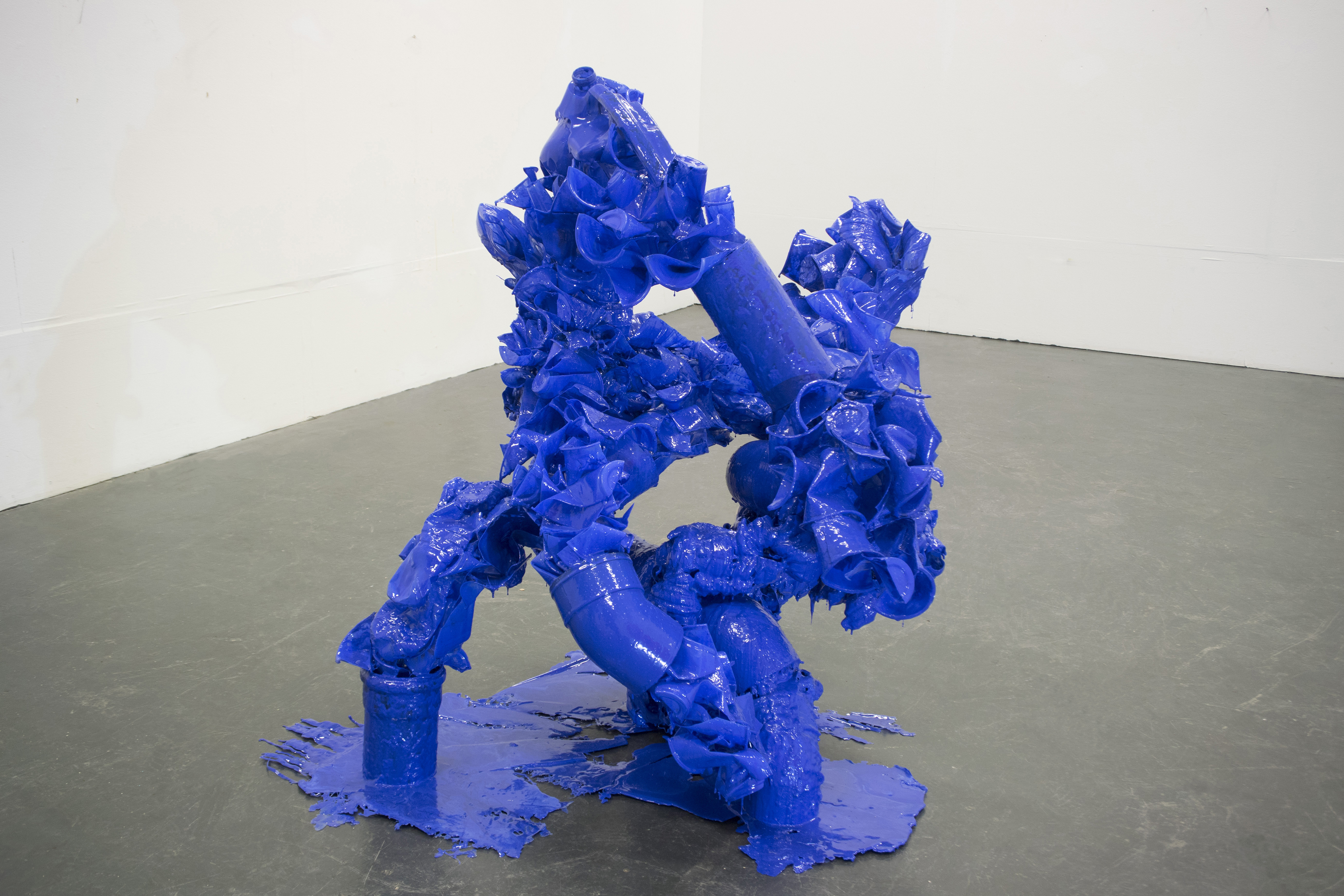Konstantinos Leloudas’s work explores the ever-increasing problems created from the interaction between the modern ways of living and the “Green Environment”.
The main aim of his artwork is to portray the devastating effects of using insignificant, everyday objects and materials, such as plastic bottles of water, scrap metals etc, and to raise awareness about their destructive power. To do so, he experiments with their scale and size and combines them in a playful manner. In this way, he attempts to give them unique forms that carry their own distinctive meanings; meanings which transcend their original uses and stimulate the viewers to think about the side-effects of their irresponsible use.

Reflecting these issues, he creates sculptures by plastic bottles, discarded materials and wood. His choice of plastic was triggered by the continuous research and reports on the devastating effects of plastic pollution on wildlife and especially in the oceans. Furthermore, Leloudas chose wood as a material of choice for its strong environmental connotations: setting forests on fire is the cause of major environmental destructions (and humanitarian crises) that happen overnight, while re-forestation is a slow and expensive process.
The influences come mostly from artists and ecologists such as Timothy Morton, Jane Bennett and Nicolas Deshayes who transform (sometimes beyond recognition) everyday objects and ideas to reflect environmental and related political issues.
Konstantinos Leloudas submitted artwork is entitled “Bloom” and aims to portray metaphorically the destruction that is caused by our “Green Environment” by our commitment to unsavoury (consumer and industrial) materials. The system of pipes represents the drainage system of our cities which is under huge pressure because of the large amount of unrecyclable, discarded materials going through it. Most of these materials end up in the sea, ocean or otherwise, already (depicted by the blue colour of the work), yet it is expected that ignoring their destructive potential will lead to irreversible destruction (depicted by the explosion in the artwork). The ensuing contamination of the water is portrayed by a synthesis of plastic water bottles and several other types of plastic containers that we use in our everyday life. In that respect, the title “Bloom” is used in an ironic manner. While we believe that our lives become richer, stronger and more sophisticated, we tend to ignore that this development is taking place to the detriment of our “Green Environment” with the environmental tipping point not far off.
Τhe artwork impacts on the public at three different level. Initially, its exaggerated shapes and forms in combination with its bright blue color capture the attention of the audience, motivating it to look for its messages. While looking carefully at it, the struggle between the plastic materials and the pipes triggers thoughts and (maybe memories) to the audience about the (over)use of plastic materials, the tolerance limits of the environment and the catastrophic consequences of exceeding these limits. Ultimately, the overarching aim of this artwork is to fuel the (re)action of the audience to the sources and consequences of plastic pollution, ideally by changing behaviour when it comes to (not) using and/or recycling plastic, but also by pushing for legislative change and industrial action.
Konstantinos Leloudas was born in 1988 Athens, Greece and completed a BA in Art and Design. The artist is a postgraduate student at the MFA Fine Art course of the Wimbledon College of Art. More artwork can be accessed at HERE
